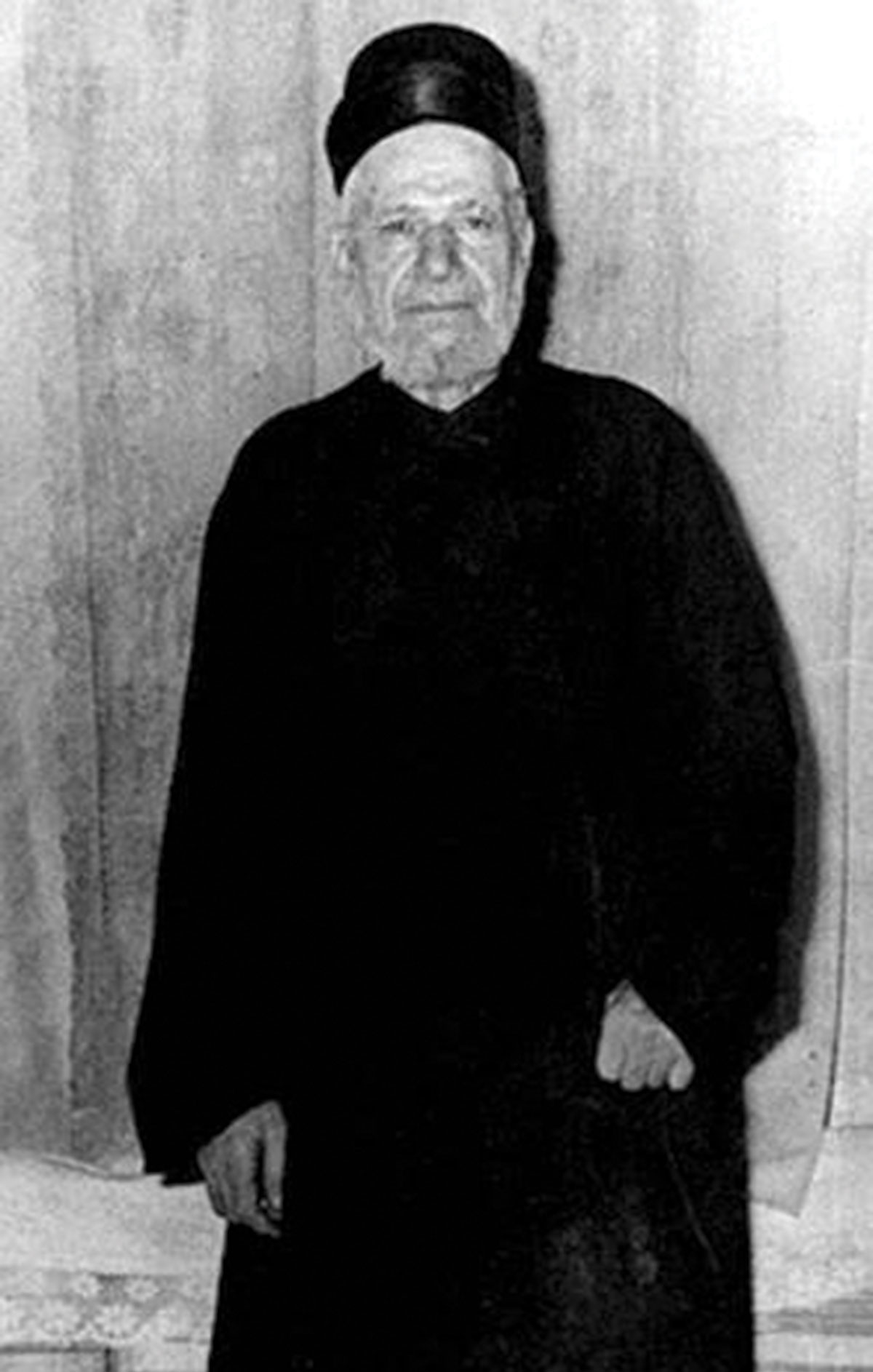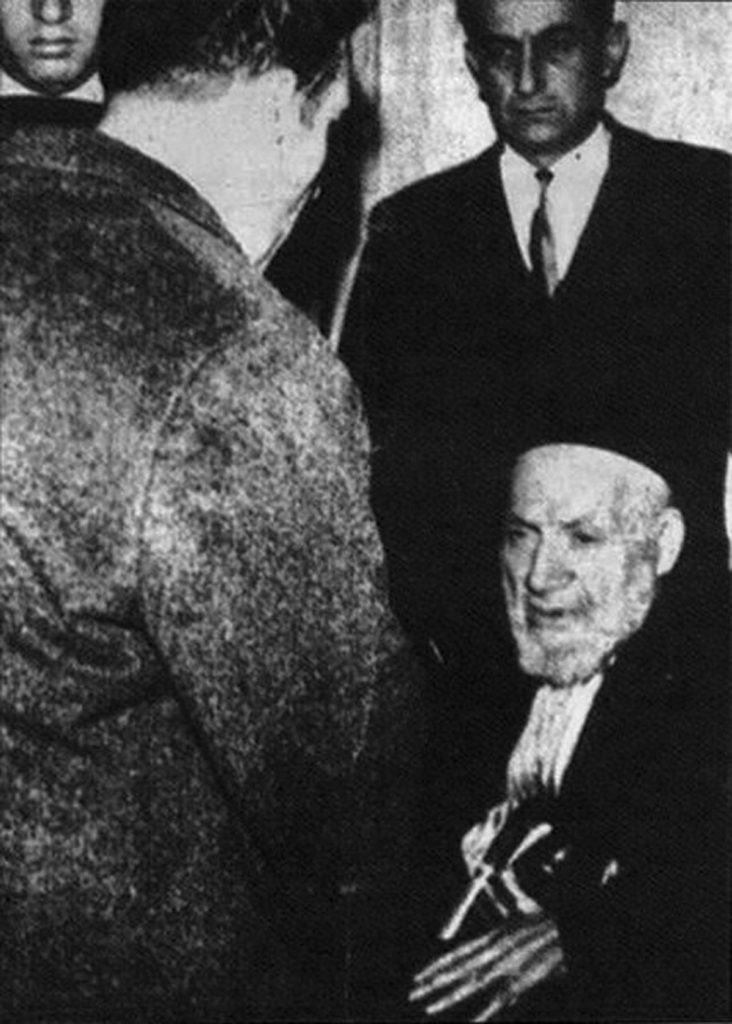
CHIEF RABBI OF DAMASCUS
MOE SAAD
HACHAM NISSIM INDIBO, CHIEF RABBI OF DAMASCUS AND A DISTINGUISHED LEADER OF THE BET DIN, WAS A STUDENT OF HACHAM YISHAK ALBUAFIA. HE LIVED A LONG LIFE AND HIS MIND WAS TOTALLY CLEAR UNTIL HIS LAST DAY. HACHAM NISSIM, SENSING THE DAY HIS PASSING CALLED HIS STUDENT HACHAM YISHAK ASSA TO HIS BEDSIDE.
Hacham Nissim’s children and grandchildren, all kohanim, were at his bedside as well. When the family was ready to leave, Hacham Assa was going to leave with them, but Hacham Nissim asked him to stay longer. The two men prayed together and after saying the Shema, Hacham Nissim passed away silently. He is buried right outside the room where Rabbi Haim Vital A”H is buried. On his stone it says “The Greatest Rabbi.”
Hacham Yom Tob Yedid A”H would send his best students to get blessings from Hacham Nissim Indibo, one of whom was Rabbi Edmond Nahum. Hacham Yedid only eulogized one person in his lifetime, that person was Hacham Indibo. In his eulogy he stated, “The passing of such a giant is as difficult as watching a Torah scroll get burned.”
Hacham Nissim was indeed a giant of the Torah world and kabballah, as well as head of the Bet Din. He always had smile on his face and greeted everyone nicely. He was very empathetic when it came to people’s feelings. He was known for his patience and as Chief Rabbi, he treated everyone—children and adults—with a great deal of respect. Whenever he was seen walking in the Jewish Quarter, everyone would gather around him, even other rabbis, and escort him wherever he was going.
Hacham Nissim was given rare permission by the Syrian government in the most difficult time for the Jews in Syria. When the famous Israeli Spy, Eli Cohen, was given a death sentence, his last request was to see a rabbi. Hacham Nissim was allowed to go to Cohen’s cell. Once he was with Cohen, he helped him write a heart-wrenching letter to his wife Nadia and his children. Everyone who saw the two men together, even the Syrians, noticed the affection and the pain they felt. Moments before Eli Cohen was hung, he and Rabbi Nissim recited the Viddui (a prayer of atonement) and the Shema.
Hacham Nissim lived next to Kneset Shebet Ahim and every single night, without fail, from midnight until morning he would teach and learn with all his students. They would work from midnight until it was time for Shahrit. After that, he would go to his shop in the Jewish Quarter where he sold wheat and oil, because he did not want any benefit from being a rabbi.
Hacham Nissim officiated many religion ceremonies without accepting anything for his time. He wanted to do everything in honor of Hashem. He wrote books and a preface to Hacham Obadiah Haday’s 8 volume “Yiskil Abdi.” Hacham Hadaya A”H appreciated Hacham Nissim, who had a great deal of knowledge about halacha and the bet din. Rabbis would travel from far away to ask him questions, even Ashkenazi rabbis. Ashkenazi Rabbi Eliezer Rublin traveled from Yershalayim to Damascus to meet Rabbi Nissim and wrote about the visit, stating that he was very impressed by Hacham Nissim’s massive knowledge on Torah. He wrote how Rabbi Nissim studied all night and only slept for a few hours, and that he was incredibly impressed with all the books Rabbi Nissim had, calling it “a massive library.” He added that he had never seen anything like it.
Jews and non-Jews went to Hacham Nissim for blessings, advice and to ask him to pray for them, when they were in need of salvation. Rabbi Nissim’s blessings came true for many people.
He reminded the Jews that in every generation someone wants to wipe the Jews off the planet and Hashem always saves us from their hands.

When the government tried to move the grave of Rabbi Haim Vital (Marhu) A”H, who is buried in Damascus, to make way for new a highway, those who objected went to Hacham Nissim for help. After that, any time the government tried to dig up the area around Rabbi Vital’s grave, they would be faced with fire and snakes. But it was a difficult time for Jews in Syria and Hacham Nissim knew that if Rabbi Vital’s grave was not moved the Jews’ lives would become even more difficult. So, he moved Rabbi Vital’s grave, twice. Once across the highway, but the government went after him again, so Hacham Nissim moved the grave to the Jewish Cemetery, and thus when Hacham Nissim passed, he merited to be buried right outside Rabbi Vital’s place of burial.
Hacham Nissim would leave to go to the Rabbi Rafael Halevi Synagogue on Friday nights, two hours before Shabbat, because as he made his way to synagogue in his long and distinguished gown, people would line up to kiss his hand and receive a blessing. His picture was hung in almost every Jewish shop in Damascus, and many non-Jewish shops as well.
Every Erev Yom Kippur the Jews of Damascus had a tradition to visit the Jewish cemetery and the grave of Rabbi Haim Vital, where Rabbi Nissim was buried as well. May his memory be a blessing.



